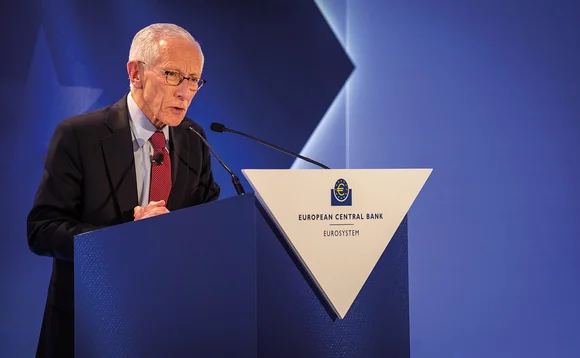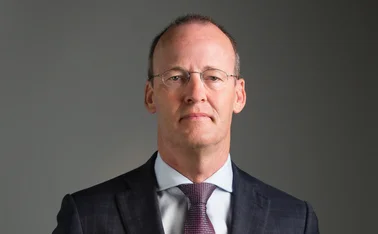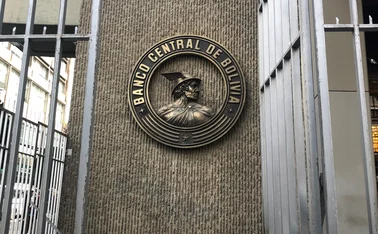
Obituary: Stanley Fischer, 1943–2025
Fischer had a profound impact on central banking, as path-breaking academic and top policy-maker

Stanley Fischer, one of the most accomplished and influential central bankers of his generation, died on May 31 at the age of 81.
Fischer’s contemporaries in the top echelons of global policy-making remember him as a formidable economist but also an unofficial ambassador for central banking, whose good humour and wisdom helped him unite a divided profession and navigate difficult political terrain.
“Stan’s positive outlook enlivened our meetings and lightened the burden of our responsibilities,” former Federal Reserve chair Janet Yellen tells Central Banking. “He was unfailingly gracious and thoughtful and an uncommonly decent person.”
Former US Treasury secretary Larry Summers says Fischer had an “immense capacity for personal warmth. His career showed that people, as well as principles, ultimately matter”.
“I was deeply saddened by the news of Stanley Fischer’s death,” says Karnit Flug, who succeeded Fischer as governor of the Bank of Israel. “Stan was my mentor, teacher and friend.”
Fischer was born in 1943 in Northern Rhodesia – now Zambia – to a family of Latvian-Lithuanian émigrés. He grew up in the village of Mazabuka in a house attached to the general store that was owned by his parents. He later joined a Jewish nationalist youth movement, where he met Rhoda Keet, his future wife, with whom he had three sons, Michael, David and Jonathan. It was also with the youth group that he travelled to Israel for the first time in 1960.
LSE, Chicago and MIT
Although he had been set to study Hebrew at the University of Jerusalem, he changed course, winning a scholarship to study economics at the London School of Economics (LSE). He obtained a bachelor’s degree from the LSE in 1965 and a master’s in 1965, before moving to the Massachusetts Institute of Technology (MIT) to study for a PhD, attracted by the presence on the faculty of eminent economists Robert Solow and Paul Samuelson.
Olivier Blanchard, a former International Monetary Fund chief economist and a student of Fischer’s, wrote in a 2023 article that Fischer had been part of an “exceptional group of students” at MIT. His cohort included Avinash Dixit, Robert Gorden, Robert Hall, Robert Merton, William Nordhaus and Joseph Stiglitz, many of whom went on to win the Nobel Prize in economics. Fischer wrote his thesis on lifetime portfolio choice under Franklin Fisher.
After completing the thesis in 1969 he transferred to the University of Chicago, where he met friends and life-long collaborators in Jacob Frenkel and Rudi Dornbusch. In 1978, Fischer would write an influential textbook with Dornbusch, titled simply Macroeconomics, which was adopted by university economics departments around the world and helped spread the basis of New Keynesian economics. Summers describes the book as the “ur-text for the New Keynesian approach”, adding that it “guides every developed country central bank today”. It remains in print, with the thirteenth edition having been published in 2018.
Warring factions
Perhaps Fischer’s most lasting accomplishment as an academic economist was his role in uniting the “warring wings of classical and Keynesian macroeconomists”, as former IMF economist Prakash Loungani put it in a 2013 article on Fischer’s work. Chicago represented the classical wing, led by monetarist Milton Friedman, while the economists at MIT represented the Keynesian tradition. In 1973, Fischer returned to MIT and began working to bridge the two worlds.
A 1977 paper provided the structure for what would become the “neoclassical synthesis” and the birth of New Keynesian economics. Fischer’s insight was that even assuming agents in the economy to be rational, short-term wage rigidities could cause the economy to be knocked from its equilibrium path. The result explained why central banks could intervene to stabilise the economy in the short term without putting unemployment on an unsustainable path. The paper acknowledges the parallel work of Edmund Phelps and John Taylor, who arrived at a similar conclusion by different means in their own 1977 paper.

This line of argument continues to form the basis of many core central bank models today. Despite attracting numerous critics for its simplifications of reality, the New Keynesian school became dominant in the 1990s and was cemented into central bank modelling frameworks by the creation of the dynamic stochastic general equilibrium model.
Blanchard writes that Fischer’s research was characterised by simplicity and transparency, even as it went after the biggest issues of the day. He also stresses Fischer’s humbleness: “Even as macro was going through wars of religion, there was no sense of ‘us versus them’ but instead an openness to alternative views.”
“What difference does it make?”
Fischer remained at MIT throughout the 1980s, and taught several economists who went on to become top policy-makers – including Mario Draghi, later the president of the European Central Bank, and Ben Bernanke, who went on to chair the Fed. It was during this period that Fischer got his own first taste of policy-making, advising the Israeli government in 1985 on tackling a bout of high inflation at the behest of the US state department. In 1988 he was appointed chief economist of the World Bank, where he served until 1990.
Fischer returned to MIT but struggled to readjust to the lack of urgent policy work. “I remember going to theory seminars and saying to myself, what difference does it make whether this guy is right or wrong?” he said. Greg Mankiw, another high-flying former student of Fischer’s, said he “got the sense [Fischer] was a little impatient with academics”.
Fischer would soon get his chance to tackle serious policy problems. In 1994 he was appointed deputy managing director of the IMF, just as the peso crisis hit Mexico. Over the next seven years, Russia, South-east Asia, Brazil, Argentina and Turkey would all suffer financial crises that tested the IMF’s mettle.
Fischer himself said in 2001 that he embraced a co-operative approach to his work, aware that one of the differences between textbooks and the real world is “figuring out how to deal in complicated situations with live human beings: what is driving them, what matters to them, which incentives they will respond to, and how”.
At the IMF, Fischer was committed to what would later be known as the “Washington consensus”. He argued sound macroeconomic fundamentals required a mix of strict fiscal policy and control of the money supply, coupled with an openness to global capital flows and trade. Stiglitz became a vocal critic of the approach, arguing it imposed unnecessary suffering on the poorest members of society, and Fischer later acknowledged that the IMF occasionally went too far in arguing for tighter fiscal and monetary policy. The institution has since softened its approach, but it still advocates floating exchange rates and open capital accounts in most cases.
Fischer left the IMF in 2001 when his term as deputy expired, having failed in his bid for the top job. Instead, he took a position as vice-chair of Citigroup, his first experience of the private sector. He said he enjoyed the challenge of overseeing an organisation of 280,000 people, but it was not long before he was drawn back into the public sphere.
Into central banking
In 2005, he became governor of the Bank of Israel, a position he would retain through the global financial crisis. During the crisis he implemented advice he had previously given to others: to act fast and early. He oversaw rapid interest rate cuts that helped soften the blow from the crisis. He also worked to curb excesses in the country’s mortgage sector, and warned the government against a rapid debt build-up. Later, the Bank of Israel was one of the first to raise rates as the crisis faded.
One of his major successes as governor was negotiating a change to the central bank law in 2010. Flug, who worked with Fischer as head of research and deputy governor, before taking over as governor in 2013, says the law change helped ensure the central bank’s independence and gave it the policy tools it needed.
“I worked closely with Stan during the eight years he served as the Bank of Israel’s governor,” Flug tells Central Banking. “I learned many things from him: how to approach policy questions, how to use theory and data in formulating policy, how to demand from staff a very critical analysis of the data at hand, how to question the limits of using models with their simplifying assumptions, and how to convey a complicated message to the public (or politicians) in simple terms.”

Not long after leaving the Bank of Israel, Fischer was appointed a governor and vice-chair of the Fed, where he served under Yellen as chair. Fischer brought a strong international focus to the Fed board. He stressed the importance of international trade to the US economy, the strength of the dollar financial system and the “spillback” effects of US monetary policy in several speeches.
“In a very substantive way, Stan served as the Fed’s ambassador to the world, ably representing us in many multilateral settings,” says Yellen. “More generally, Stan was an ambassador for central banking, speaking with indisputable authority about its vital role in promoting economic and financial stability. He used his authority to forcefully defend the need for central banks such as the Fed to make monetary policy independent of political influence and to keep in place the supervision and regulation that strengthened the banking system and enhanced financial stability.”
Policy-makers across the world have paid tribute to Fischer’s legacy. “Stan led a life of exemplary public service, matched only by his innate goodness as a colleague, friend and human being,” said IMF managing director Kristalina Georgieva in a statement.
Bank of Israel governor Amir Yaron said: “Generations of Bank of Israel employees and I bow our heads today in memory of Professor Fischer, whose contribution to the Bank of Israel and to advancing Israel’s economy was truly significant. Our deepest sympathies go out to his family. May his memory be a blessing.”
Yellen adds: “I found that there were two types of people in the world: those who admired Stan Fischer, and those who hadn’t yet had the pleasure of knowing him.”
Only users who have a paid subscription or are part of a corporate subscription are able to print or copy content.
To access these options, along with all other subscription benefits, please contact info@centralbanking.com or view our subscription options here: subscriptions.centralbanking.com/subscribe
You are currently unable to print this content. Please contact info@centralbanking.com to find out more.
You are currently unable to copy this content. Please contact info@centralbanking.com to find out more.
Copyright Infopro Digital Limited. All rights reserved.
As outlined in our terms and conditions, https://www.infopro-digital.com/terms-and-conditions/subscriptions/ (point 2.4), printing is limited to a single copy.
If you would like to purchase additional rights please email info@centralbanking.com test test test
Copyright Infopro Digital Limited. All rights reserved.
You may share this content using our article tools. As outlined in our terms and conditions, https://www.infopro-digital.com/terms-and-conditions/subscriptions/ (clause 2.4), an Authorised User may only make one copy of the materials for their own personal use. You must also comply with the restrictions in clause 2.5.
If you would like to purchase additional rights please email info@centralbanking.com test test test








